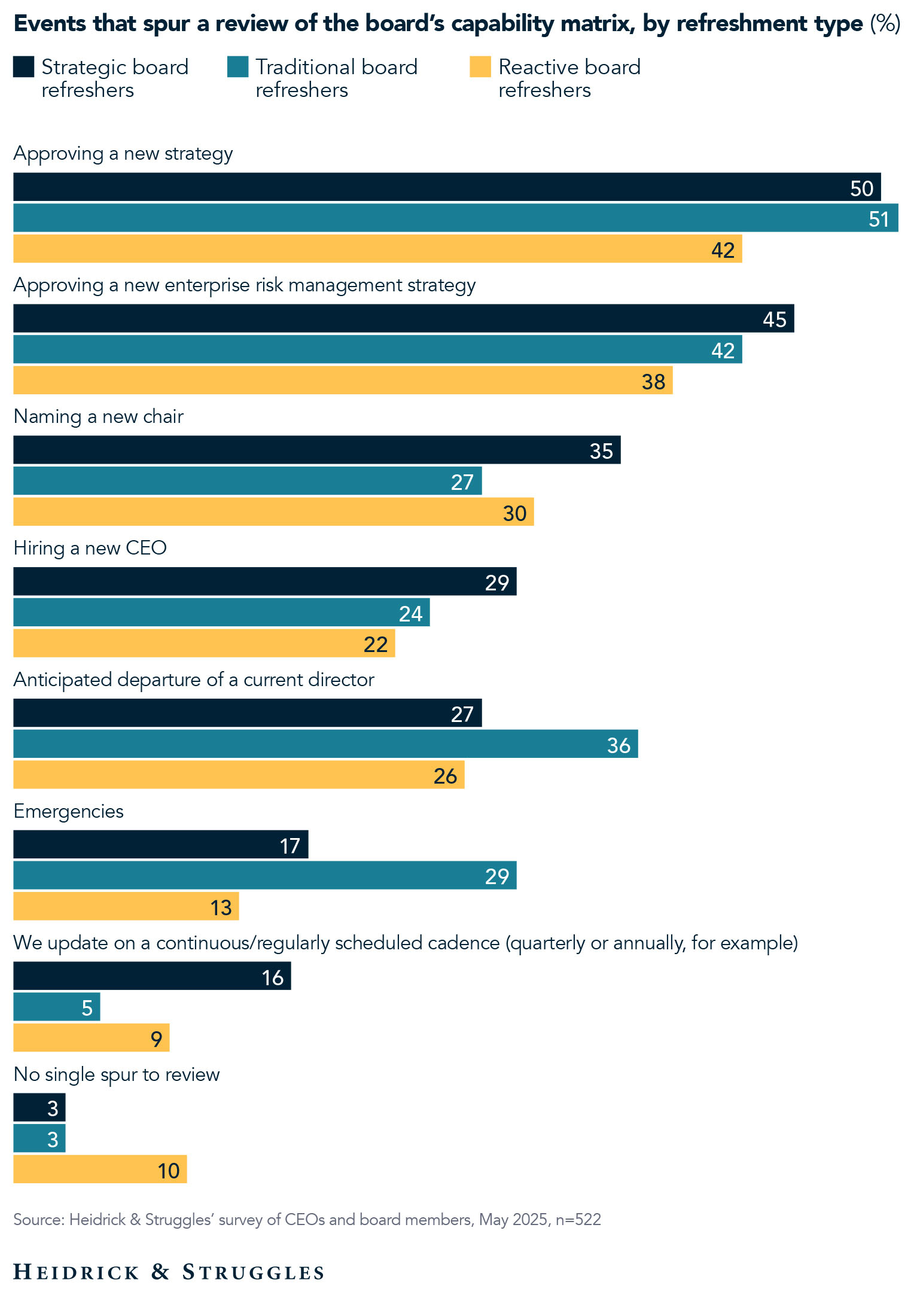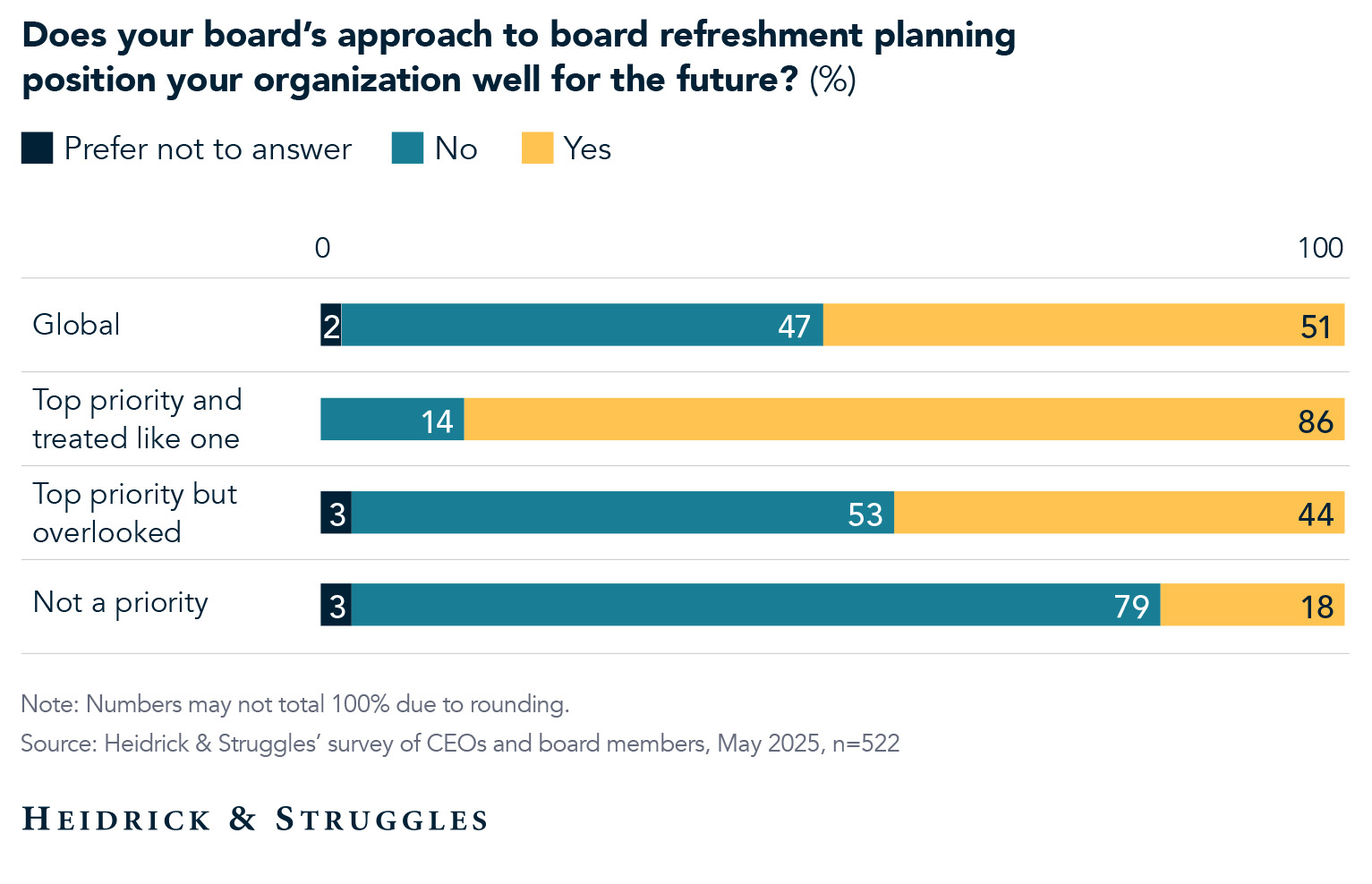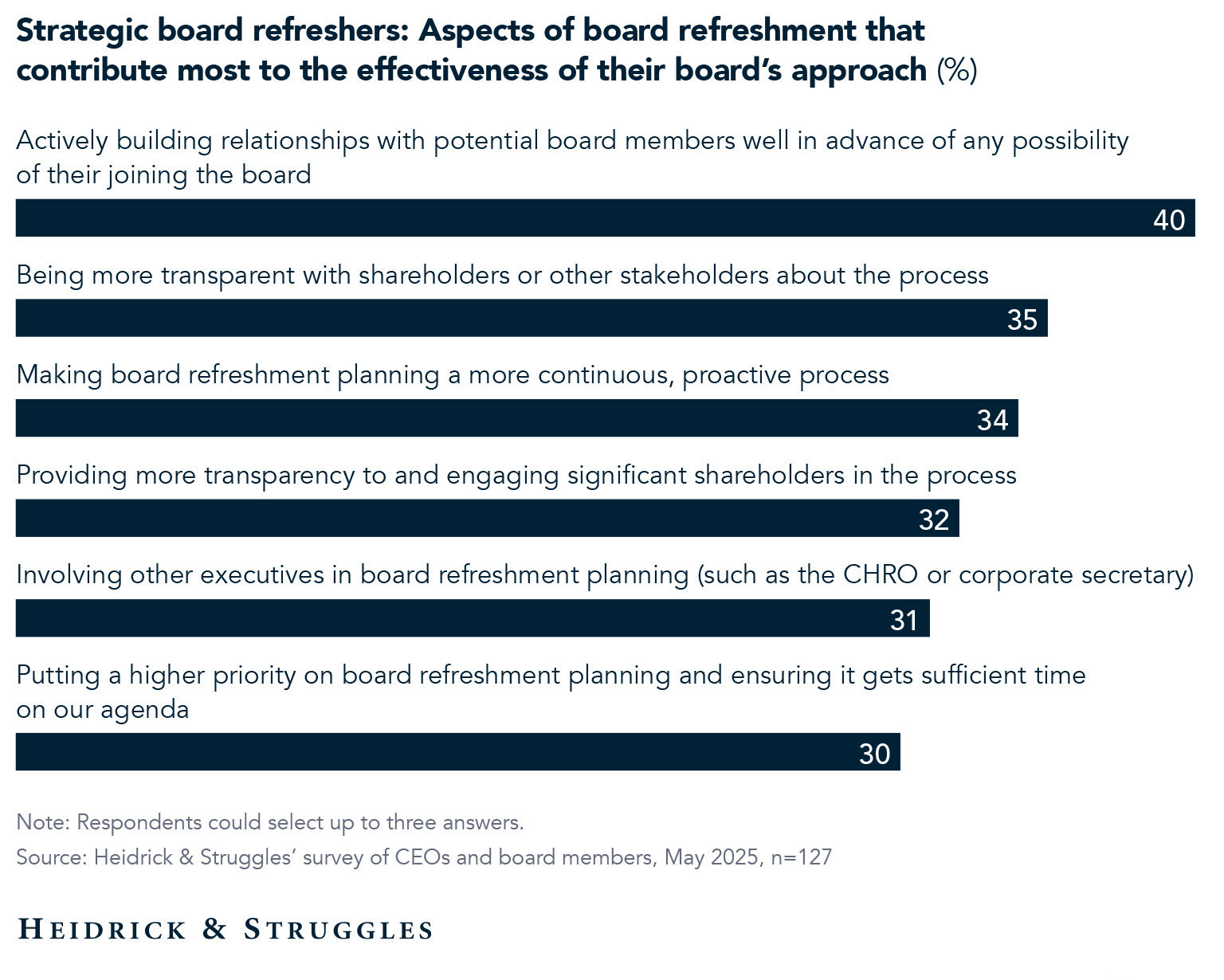Boards & Governance
Board Monitor 2025: Continuous board refreshment—detailed survey insights
The ability to regularly assess and update board composition is a key differentiator in long-term organizational success, yet only 12% of CEOs and board members are entirely confident that their organization’s board refreshment practices are positioning their board well for the future.1 Not all boards approach refreshment with the same level of urgency or strategic intent—as another recent survey of board members and CEOs explored.2 We found three distinct approaches to board refreshment—strategic board refreshers, who see refreshment as a priority and act accordingly; traditional board refreshers, who recognize its importance but allow other priorities to overshadow it; and reactive board refreshers, who simply do not view refreshment as a top priority. This survey offers valuable insight into how these differing mindsets play out in practice, revealing notable gaps between what boards say they believe about refreshment and how they actually behave. The article below offers detailed breakdowns by company size, ownership type, market, and sector, complementing our global report.
Distributions of refreshment types
About half of respondents identify as traditional board refreshers. The distribution of traditional refreshers by company ownership and size is largely steady. For five out of six categories, the percentage of respondents who identify as traditional refreshers is between 52% and 56%. The exception is PE-backed companies, who skew more heavily toward a reactive refreshment style than do most of the other respondents. The distribution of traditional refreshers by market varies a bit more, ranging from 38% in Saudi Arabia to 74% in Hong Kong. The United Kingdom has a surprisingly high percentage of reactive board refreshers, at 48%. This may be because term limits in the United Kingdom are concrete and obeyed. Since these terms are fixed, executives may not see refreshment as a priority.
Traditional board refreshers: More reactive than they appear
However, traditional board refreshers behave in a more reactive manner than the priority they put on the topic suggests. For example, far more often than any other group, traditional board refreshers say that an emergency or the anticipated departure of a current director would spur a review of the board’s capability matrix. Only 5% of traditional refreshers report a continuous or regularly scheduled review of the matrix, which is even lower than the 9% of respondents classified as reactive board refreshers who report such a review. Overall, traditional and reactive board refreshers report many similarities in behavior, suggesting that the biggest difference between these two groups is their attitudes about whether board refreshment should be a priority rather than whether it actually is.
Effects of not prioritizing board refreshment
Generally, respondents who feel that their board’s approach to refreshment planning positions their organization well for the future are the ones who treat board refreshment as a priority, not just the ones who believe it is. Among respondents who view board refreshment as a top priority but acknowledge it is overlooked, fewer than half (44%) believe their board is well-positioned for the future. This is substantially lower than the 86% of strategic board refreshers who feel confident in their board’s future readiness. In fact, traditional refreshers are closer to reactive refreshers on this point as well as in their behaviors.
Closing the gap: Where to go from here
While many boards identify as traditional refreshers, acknowledging the importance of board refreshment, their actions often align more closely with reactive practices. This gap between attitude and behavior can limit a board’s ability to position its organization for future success. The data clearly shows that boards that treat refreshment as a strategic priority—engaging in proactive, forward-thinking practices—are more confident in their organization’s readiness for the future. Encouragingly, becoming more strategic does not demand substantial resources but simply a commitment to long-term planning.
The good news is that there are many ways for boards that want to be more strategic in their board refreshment approach to get started. For example, the aspect of board refreshment cited as contributing most to strategic refreshers’ success was “actively building relationships with potential board members well in advance of any possibility of their joining the board.” This indicates that the most strenuous part of a strategic board refreshment approach stems from being forward-thinking rather than requiring significant time or financial resources.
By shifting from reactive or traditional patterns to a more deliberate and strategic approach, boards can better equip themselves to meet evolving challenges and opportunities. For a global perspective about trends in board refreshment strategies and how boards can improve their effectiveness, see the Heidrick & Struggles report on the Board Monitor 2025 survey.
References
1 “CEO and board confidence monitor 2025: Persistent concerns, pockets of increased confidence,” Heidrick & Struggles, February 5, 2025, heidrick.com.
2 Board Monitor 2025: The Quiet Power of Continuous Board Refreshment, Heidrick & Struggles, August 20, 2025, heidrick.com.


